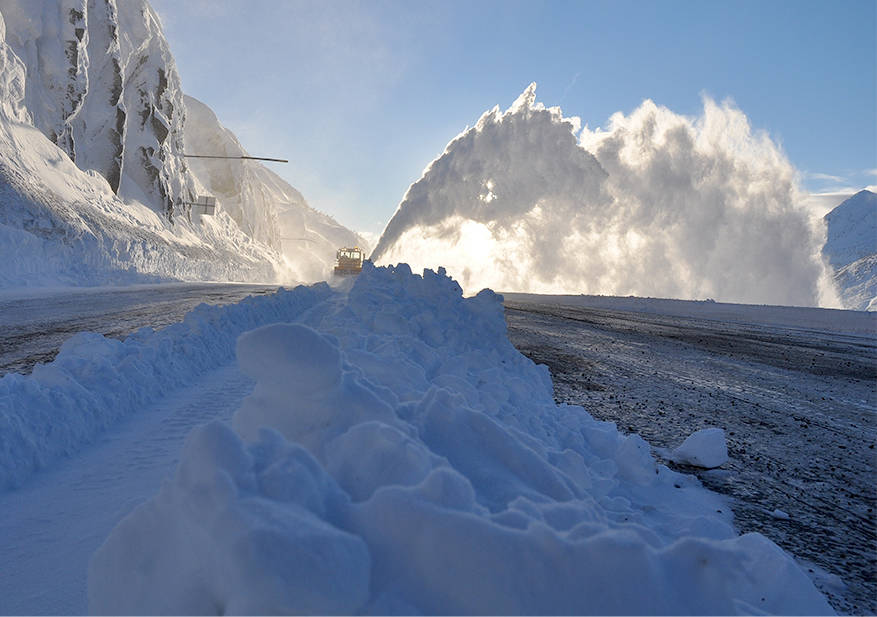The State of Alaska is looking for someone who enjoys working with explosives and coping with avalanches.
Last week, the Alaska Department of Transportation and Public Facilities announced it is seeking someone to run the avalanche control program for the Klondike Highway north of Skagway. The pay is $45,000 per year for the seasonal job that runs from Jan. 15 through May 5.
“It’s a critical highway,” said Aurah Landau, a spokeswoman for DOT’s Southcoast region, which includes Skagway and Juneau.
For the past few years, the state has been keeping the highway open with the help of a contractor extended on a year-by-year basis. The new contract could be good for up to five years, depending on annual approval by the state.
For Southeast Alaska, the avalanche control program is a quiet but critical factor in keeping the highway open through the winter. Trucks laden with Yukon ore use the highway to reach Skagway’s terminal. Ferry passengers travel the highway regularly, seeking the quickest route between Juneau and Whitehorse.
In 14 miles, the highway rises from sea level to 3,335 feet at the border, turning conditions from coastal to Interior frigid. The weather conditions make for difficult forecasts.
Hal Hartman has been controlling avalanches on the Klondike Highway since 2012 and is among the people seeking the new contract. (Bids open Oct. 30.)
“I’m going to tell you right now that avalanche control is more than just avalanche control,” he said by phone from Snowmass, Colorado, where he makes his home.
Dealing with people and their needs is even more important than dealing with snow, he said.
“It’s about human relations. It’s huge. It’s trust,” he said.
He builds that trust by keeping the highway — and everyone who uses it — safe.
Hartman is a physicist by training, and at 63 years old, this would be his 45th winter in avalanche control. In addition to work in Skagway, he’s done jobs around the world, from Chile to Iraq, where he controlled avalanches for a mountainous oil-drilling operation.
In Skagway, Hartman works shifts of 10 to 12 hours a day. Most of those hours aren’t behind a computer — they’re out in the snow or riding shotgun in the cab of a plow truck. If Hartman misses his forecast, an avalanche could carry a car over the highway’s guardrail and to the rocks hundreds of feet below.
“The most hazardous job on that highway is plow truck No. 1 at 6 a.m. on the highway,” Hartman said. “That’s the guy or gal to keep alive.”
On snowy mornings, Hartman rides in the plow’s cab, keeping an eye on the way the snow behaves as the plow blade hits it.
“Fractures (in the snow) are running 100 meters up the roadway in front of us,” Hartman said, describing the scene. “That is the most important measure.”
Avalanches typically happen when a load of heavier snow falls on a weaker layer of pre-existing snow that can’t support it. A strong gust of wind or the vibrations caused by a grumbling truck could be enough to get that top layer moving downhill, quickly.
Through the winter, Hartman tests those weaker layers with tools as snowstorm after snowstorm piles new layers of snow atop old layers.
If snow starts building up in avalanche prone-areas, he can prematurely trigger an avalanche with explosives, making sure the wave of powder never gets big enough to reach the roadway.
The goal is to keep the highway open, he said, because he’s seen how it hurts the town when the road closes.
“It crushes their paycheck. It just stops them dead in their tracks, and there’s no way to recover,” he said. “It cuts deep into a group of people living into a pretty rough place. That’s the part of the Klondike Highway that just breaks my heart.”

